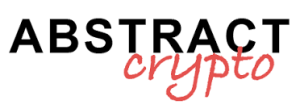A rapid sequence of events has spotlighted transparency and potential conflicts of interest within the ecosystem linked to the Trump family: first, a $2 billion investment from the Emirates in Binance, settled through the stablecoin USD1 of World Liberty; then the United States’ approval for the purchase of advanced chips by the United Arab Emirates. The scenario was reported by the New York Times and commented on by CNBC.
According to the data collected by our editorial team (preliminary analysis updated as of September 16, 2025), the circulating capitalization of the USD1 token was approximately 2.7 billion dollars on the public market board; we have verified corporate communications and publicly available on-chain reports to confirm the existence of transfers related to the operation. Industry analysts note that the temporal sequence of events and the parties involved necessitate more detailed disclosures and independent audits.
What Happened: Essential Timeline
- March — The Emirati company MGX announces a 2 billion dollar investment in Binance.
- May — It is revealed that the operation was settled in USD1, the stablecoin issued by World Liberty Financial.
- A few weeks later — The U.S. administration authorizes the United Arab Emirates to purchase “hundreds of thousands” of advanced chips, as highlighted by the New York Times.
Key Numbers
- 2 billion dollars: the amount of MGX’s investment in Binance.
- “Hundreds of thousands”: volume of authorized advanced chips
- ~2.7 billion dollars: estimated circulating supply of the USD1 token, as reported by CoinMarketCap (snapshot from September 16, 2025).
- ~5 billion dollars: estimated growth in crypto assets attributed to the Trump family after the listing of the WLFI token; a controversial figure that requires verification with precise methodology, mark-to-market, and date of observation.
Possible Conflicts of Interest: What Emerges
No direct exchange evidence emerges. However, the temporal proximity between the capital influx via stablecoins and the authorization to purchase chips raises ethical questions regarding the rules aimed at preventing public officials from participating in decisions that could benefit personal or family financial interests. In the United States, the prohibition is enshrined in 18 U.S.C. § 208 and outlined in the guidelines of the Office of Government Ethics. In this context, the evaluation depends on the specific holdings, roles, and documented timelines.
Stablecoin and Transnational Flows
The use of the stablecoin USD1 to finance the operation towards Binance highlights how digital instruments facilitate rapid cross-border transfers, thanks to regulations and almost instant on-chain settlement. It should be noted that this scenario brings attention to operational transparency – from wallet traceability to reserve audits – and to a still fragmented regulatory framework.
In the USA, an organic federal framework for stablecoins is under discussion, as in the case of the Clarity for Payment Stablecoins Act, while other jurisdictions adopt heterogeneous rules. For further insights on audit mechanisms and reserves, see our thematic page Stablecoin: audit and transparency.
Actors and Relationships
- World Liberty Financial: project linked to the Trump family and the Witkoff, issuer of the stablecoin USD1 and the token WLFI
- MGX (UAE): Emirati vehicle that announced a 2 billion dollar investment in Binance.
- Binance: exchange crypto recipient of the funds; recently introduced new generative AI solutions.
- American Bitcoin: initiative involving Eric and Donald Trump Jr.
- Steve Witkoff: entrepreneur designated as the President’s envoy and, according to an August disclosure, still a shareholder of World Liberty.
Regulatory Context and Points of Attention
- Public Ethics: in addition to 18 U.S.C. § 208, the OGE Standards of Ethical Conduct specify obligations and recusals in the presence of financial interests. For practical guidelines and disclosure checks, see also our in-depth article on ethics and disclosure.
- Stablecoin: authorizations, reserves, audit attestations, and transparency are fundamental for the reliability of tokens like USD1 and other prominent stablecoins.
- National security: export control on advanced chips and the related licenses are closely tied to technological geopolitics; industry reports (e.g., Reuters, May 2025) document draft agreements and potential quantities of chips involved.
Why the story is controversial
The case intertwines politics, digital finance, and strategic technology. The tight timeline, stock intersections, and the use of a private stablecoin in a massive flow to the main global exchange fuel the debate on governance and transparency in public decisions, especially when such decisions affect operators with possible family or business ties.
Extended Timeline (Reconstruction)
- March — Announcement of MGX investment in Binance.
- May — Revelation of the use of the stablecoin USD1 for the operation.
- Within a couple of weeks from the revelation — U.S. authorization for the purchase of advanced chips by the United Arab Emirates.


